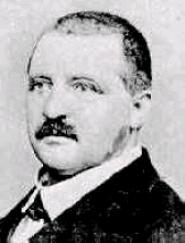Symphony No. 4 (Bruckner)
| Symphony No. 4 | |
|---|---|
| "Romantic" | |
| by Anton Bruckner | |

A portrait of Anton Bruckner, c. 1860
|
|
| Key | E-flat major |
| Catalogue | WAB 104 |
| Composed |
|
| Dedication | Prince Konstantin of Hohenlohe-Schillingsfürst |
| Published |
1889–1890
|
| Recorded | 1936 Karl Böhm, Dresden Staatskapelle |
| Movements | 4 |
| Premiere | |
| Date | 20 February 1881 |
| Location | Vienna |
| Conductor | Hans Richter |
| Performers | Vienna Philharmonic |
Anton Bruckner's Symphony No. 4 in E-flat major (WAB 104) is one of the composer's most popular works. It was written in 1874 and revised several times through 1888. It was dedicated to Prince Konstantin of Hohenlohe-Schillingsfürst. It was premiered in 1881 by Hans Richter in Vienna to great acclaim.
The symphony's nickname of Romantic was used by the composer himself. This was at the height of the Romantic movement in the arts as depicted, inter alia, in the operas Lohengrin and Siegfried of Richard Wagner.
The symphony has four movements:
These tempo markings are from the 1880 version. The 1888 version, edited by Benjamin Korstvedt in the Gesamtausgabe (Band IV Teil 3) has slightly different tempo marking, plus metronome markings.
There exists much evidence that Bruckner had a program in mind for the Fourth Symphony. In a letter to conductor Hermann Levi of 8 December 1884, Bruckner wrote: "In the first movement after a full night's sleep the day is announced by the horn, 2nd movement song, 3rd movement hunting trio, musical entertainment of the hunters in the wood. There is a similar passage in a letter from the composer to Paul Heyse of 22 December 1890: "In the first movement of the "Romantic" Fourth Symphony the intention is to depict the horn that proclaims the day from the town hall! Then life goes on; in the Gesangsperiode [the second subject] the theme is the song of the great tit [a bird] Zizipe. 2nd movement: song, prayer, serenade. 3rd: hunt and in the Trio how a barrel-organ plays during the midday meal in the forest.
The autograph of the Scherzo and Finale of the 1878 version of the symphony contains markings such as Jagdthema (hunting theme), Tanzweise während der Mahlzeit auf der Jagd (dance tune during the lunch break while hunting) and Volksfest (people's festival). In addition to these clues that come directly from Bruckner, the musicologist Theodor Helm communicated a more detailed account reported via the composer's associate Bernhard Deubler: "Mediaeval city -- Daybreak -- Morning calls sound from the city towers -- the gates open -- On proud horses the knights burst out into the open, the magic of nature envelops them -- forest murmurs -- bird song -- and so the Romantic picture develops further...
...
Wikipedia
